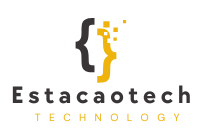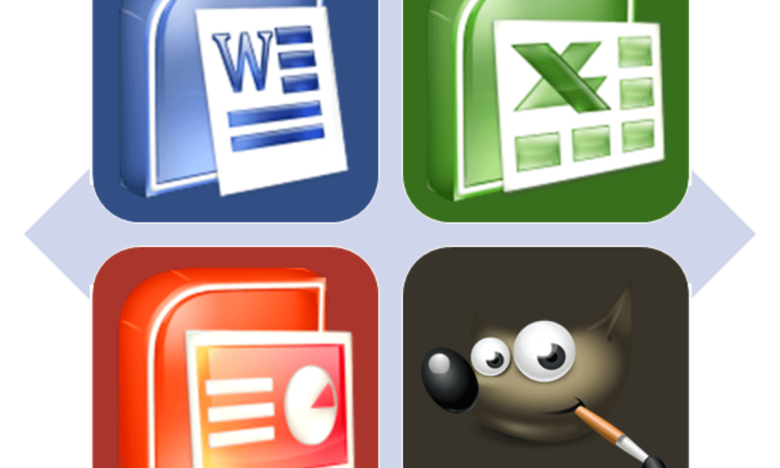Software and applications are integral parts of our lives. They power our devices, organize our work, entertain us, and keep us connected. Behind the screens of every computer, smartphone, and smart device lies software running the show. While hardware forms the physical structure of a device, software serves as its soul, enabling it to perform countless tasks. Unlike physical tools, software is intangible, built through lines of code and programmed logic, making it a versatile yet intricate creation. But what exactly constitutes software, and how do applications differ from it? This article unravels their significance and their roles in shaping our daily existence.
The Ubiquitous Role of Software in Modern Life
Today, software is everywhere. From making simple calculations to driving advanced machinery, its applications are limitless. Think about your morning routine—software is there when you check your phone for emails, use GPS to find the fastest route to work, or even stream your favorite songs during your commute. Businesses leverage software to manage operations, schools use it for e-learning, and governments rely on it for infrastructure monitoring. Software touches every industry, streamlining tasks, enhancing accuracy, and enabling previously unimaginable innovations. It’s safe to say that modern life would come to a standstill without both software and its various applications at our fingertips.
Essential Software Categories for Everyday Use
Software is diverse, with categories catering to distinct needs. System software like operating systems manages the hardware, while application software focuses on user-specific tasks. These applications can range from office tools to gaming platforms. Knowing the right software to use for specific tasks can simplify your day-to-day activities. Operating systems such as Windows, macOS, and Linux form the foundation on which other software operates. Meanwhile, applications span productivity, creativity, communication, and utilities—each designed with particular users and tasks in mind. The possibilities they introduce are endless, empowering individuals to handle everything from work projects to personal hobbies seamlessly.
Productivity Software: Enhancing Efficiency and Organization
Productivity software simplifies tasks and boosts efficiency, no matter the setting—whether it’s a corporate office or a home workspace. Tools like Microsoft Office, Google Workspace, and project management platforms like Trello or Asana help individuals and teams stay organized. Spreadsheets analyze data, word processors create presentations, and databases keep information centralized. These tools have become indispensable for businesses and students alike. They provide a streamlined approach to completing tasks, facilitating collaboration, and managing complex workflows. With the rise of cloud-based software, users can now access these productivity applications from anywhere, breaking barriers of location and enhancing how and where we work.
Creative Software: Unleashing Imagination and Design
Creativity thrives with the help of specialized software. Programs like Adobe Photoshop, Illustrator, and Final Cut Pro provide artists, designers, and content creators with dynamic tools to bring their visions to life. Whether you’re working on intricate graphic designs, editing videos, or producing compelling content, creative software opens doors to innovation. These programs are no longer exclusive to professionals, as user-friendly alternatives like Canva and CapCut bring artistic freedom to everyone. They also enable digital art, animations, and even AR/VR experiences. The creative software industry is one of constant evolution, with new updates and tools regularly expanding people’s creative abilities.
Communication Software: Connecting People Across Distances
The internet age has revolutionized how we connect, with communication software now forming the backbone of professional and personal relationships. Platforms like Zoom, Microsoft Teams, and Slack connect teams remotely, ensuring seamless collaboration. On the individual level, apps like WhatsApp, Messenger, and FaceTime bring families and friends closer, regardless of the miles between them. Email clients, social media platforms, and even real-time translation apps facilitate communication at every level. By reducing the barriers of geography, communication software fosters global collaboration, increases workplace flexibility, and enhances personal interactions in ways that continue to reshape society.
Utility Software: Maintaining System Health and Performance
Utility software serves as the maintenance crew for our devices, ensuring they run smoothly and efficiently. Antivirus programs like Norton and McAfee protect systems from malware, while tools like CCleaner optimize storage and performance. Backup applications safeguard important data, while disk defragmenters improve hard drive speed. These tools operate behind the scenes, keeping your devices functional, fast, and secure. They assess potential vulnerabilities, remove digital clutter, and manage system resources efficiently. Without utility software, digital systems would struggle to maintain their functionality over time, emphasizing its crucial role in sustaining our tech-driven lifestyles.
The Mobile App Revolution: Convenience at Your Fingertips
Mobile apps have transformed how we experience software. From fitness trackers to banking, and everything in between, apps condense complex programs into portable, user-friendly formats. Smartphones now serve as universal devices—helping us work, shop, exercise, and even control our smart homes. The app economy has grown exponentially, driven by platforms like Apple’s App Store and Google Play, offering millions of downloadable applications. Specialized apps cater to every niche, be it language learning, photo editing, or stock market analysis. More importantly, mobile apps offer unparalleled convenience, turning handheld devices into all-in-one tools that simplify everyday life further.
Emerging Trends in Software Development and Applications
Rapid advancements are reshaping the software landscape. Artificial intelligence, machine learning, and blockchain are pushing the boundaries of what software can do. Personalized and predictive software experiences, like virtual assistants and recommendation engines, highlight the role of AI. Companies are also shifting to Software-as-a-Service (SaaS) models, offering subscription-based services instead of outright purchases. Meanwhile, low-code and no-code development platforms enable individuals without technical knowledge to create simple apps. This growing democratization of software promises to make innovative solutions more accessible and impactful. What makes these trends exciting is their potential to further streamline human activities through emerging, future-forward technologies.
The Future of Software: Innovations on the Horizon
Software’s evolution has only begun. With the rise of quantum computing, systems will soon handle massive datasets—a game-changer for analytics, healthcare, and finance. Augmented reality (AR) and virtual reality (VR) will reshape education, gaming, and training. Autonomous systems, powered by complex software, will redefine industries like transportation and logistics. Additionally, sustainability in software development is gaining importance as greener coding practices emerge. Developers and businesses are tasked with not only creating powerful software but also ensuring its positive impact on society. The future holds enormous promise, with collaborations between humans and software forming the ultimate synergy.
FAQ
What is the difference between software and applications?
Software refers to all programs and operating systems that enable a device to function, while applications specifically serve user-focused tasks, like word processing or messaging.
What are examples of utility software?
Examples include antivirus programs (e.g., McAfee) and optimization tools like CCleaner that improve performance and security for devices.
How does mobile software differ from desktop software?
Mobile software is designed for portability and is optimized for touchscreens, while desktop software offers more advanced functionalities suited for larger systems.
Which type of software is ideal for students?
Students benefit from productivity apps like Google Workspace, note-taking tools like Evernote, and research aids such as citation generators.




